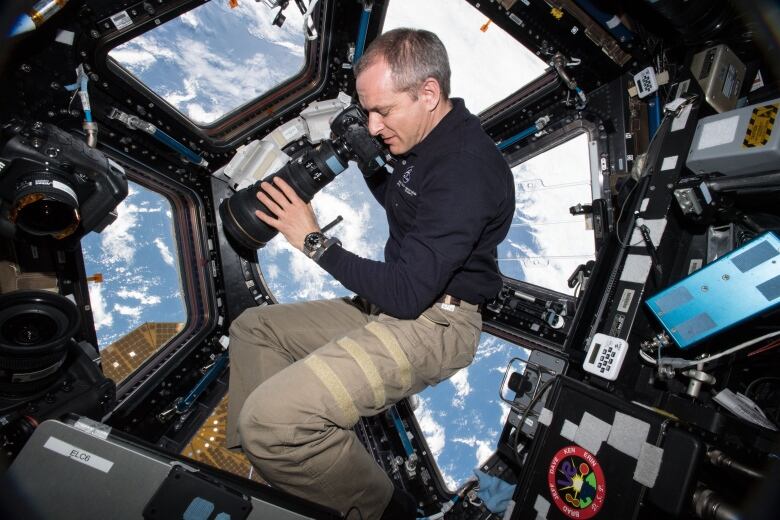Canadian VR technology will aid isolation effects on a simulated long duration space flight | CBC Radio
An international team of volunteers has just begun a 240 day isolation experiment in Russia to simulate a long duration space flight — like a trip to Mars. A new virtual reality program developed in Canada will be part of the experiment to help fight the effects of isolation.
A unique facility called “NEK” at the Institute of Biomedical Problems of the Russian Academy of Sciences in Moscow, has been used since the 1960s to study the psychological and physical effects of long duration space flights. A series of simulated missions of various lengths have taken place, the most famous, the Mars 500 mission in 2010/2011 in which an all male crew spent 520 days in isolation.
This latest eight month mission, which includes three men and three women, will include a new VR tool developed at the iSpace Lab at Simon Fraser University, in collaboration with the Centre for Space Medicine and Extreme Environments in Berlin, to help fight the effects of extreme isolation.

Users will wear 3D goggles and experience flyover views of the Earth both looking down from space and through beautiful environments such as mountain forests. The researchers believe the meditative experience will simulate what astronauts call the “overview effect” that comes from looking down on the Earth from space, as well as a sense of awe when visiting beautiful places.
The immersive technology will provide an escape from the confines of the isolated habitat and hopefully mitigate the psychological pressures of living in isolation.

A journey to Mars takes more than a half a year. During that time, a crew will become more and more isolated from Earth as their distance from home increases to 480 million kilometres, creating a time delay of up to 20 minutes for their communication signals to travel between the two planets. They will be isolated in space and in time.
And Martian explorers will have a different experience from long-duration residents of orbital space stations, like Canadian astronauts Robert Thirsk or David St. Jaques, who spent a half a year in space on the International Space Station, or Russian cosmonaut Valeri Polyakov who spent 437 days on the Mir space station in the 1990s.

They could look out the window anytime and see the beauty of the Earth passing 400 kilometres below, and had more direct access to family and friends.
But on a spacecraft headed to Mars, the Earth is out of sight during the voyage and communication will become more delayed as the distance increases. The crew will also be entirely on their own if something goes wrong because a rescue mission would also take months to reach them. It will literally be life in a tin can with no escape. This could create a profound sense of isolation and potentially interfere with their crew responsibilities or result in personality conflicts.

The psychological challenges of isolation can be formidable, not just for Mars explorers but also, as we’ve seen, for people cut off from family during COVID lockdowns. A virtual experience may help calm the nerves of astronauts in deep space, but it is also a lesson for those of us on Earth who can appreciate the value of a real walk in the woods, on a beach or any place where the power of nature provides a sense of peace.
So when you finish reading this blog, step away from your computer and take a walk outside. It will be good for you.
For all the latest Technology News Click Here
For the latest news and updates, follow us on Google News.

